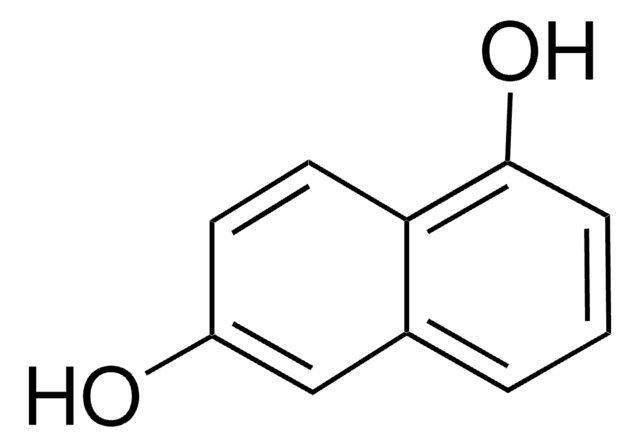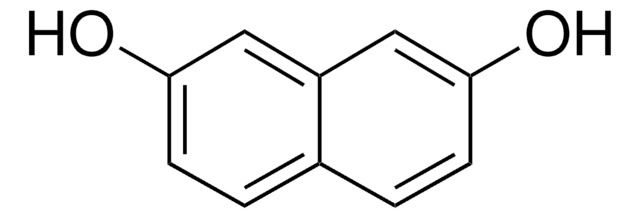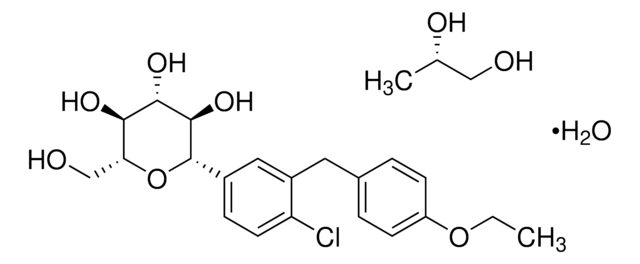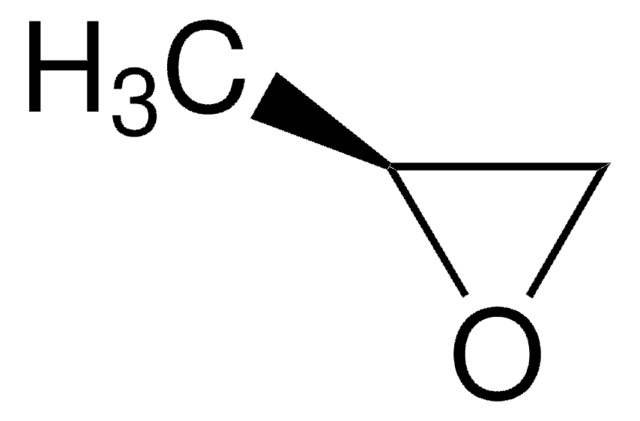540250
(S)-(+)-1,2-Propanediol
96%
Synonym(s):
(S)-(+)-Propylene glycerol
Sign Into View Organizational & Contract Pricing
All Photos(1)
About This Item
Linear Formula:
CH3CH(OH)CH2OH
CAS Number:
Molecular Weight:
76.09
Beilstein:
1718871
MDL number:
UNSPSC Code:
12352001
PubChem Substance ID:
NACRES:
NA.22
Recommended Products
Quality Level
Assay
96%
optical activity
[α]20/D +16.5°, neat
optical purity
ee: 98% (GLC)
refractive index
n20/D 1.432 (lit.)
bp
186-188 °C/765 mmHg (lit.)
density
1.036 g/mL at 20 °C (lit.)
SMILES string
C[C@H](O)CO
InChI
1S/C3H8O2/c1-3(5)2-4/h3-5H,2H2,1H3/t3-/m0/s1
InChI key
DNIAPMSPPWPWGF-VKHMYHEASA-N
Looking for similar products? Visit Product Comparison Guide
Related Categories
Application
(S)-(+)-1,2-Propanediol can be used as a reactant to synthesize:
- Optically active chiral (S)-1, 2-propanediol derivatives using mesogenic carboxylic acids via esterification in the presence of dimethylaminopyridine (DMAP) as a catalyst.
- 3,4-Ethylenedioxythiophenes via Mitsunobu reaction.
- Vicinal diol cyclic sulfates in the presence of sodium periodate and ruthenium chloride as catalysts.
Storage Class Code
10 - Combustible liquids
WGK
WGK 3
Flash Point(F)
217.4 °F - closed cup
Flash Point(C)
103 °C - closed cup
Choose from one of the most recent versions:
Already Own This Product?
Find documentation for the products that you have recently purchased in the Document Library.
Customers Also Viewed
A A Melo et al.
The Journal of laryngology and otology, 127(4), 359-363 (2013-02-15)
To determine whether the administration of mitomycin C prevents propylene glycol exposure from inducing middle-ear cholesteatoma and otitis media, in a rat model. Twenty-four Wistar rats underwent intratympanic injections on days 1, 8 and 15, via the tympanic membrane pars
H Fromme et al.
Chemosphere, 90(11), 2714-2721 (2013-01-08)
Glycol ethers are a class of semi-volatile substances used as solvents in a variety of consumer products like cleaning agents, paints, cosmetics as well as chemical intermediates. We determined 11 metabolites of ethylene and propylene glycol ethers in 44 urine
Ying-Zheng Zhao et al.
Cancer letters, 330(1), 74-83 (2012-11-29)
Multidrug resistance (MDR) is one of the major reasons for the failure of cancer chemotherapy. A newly reported liposome carrier, propylene glycol liposomes (EPI-PG-liposomes) were made to load epirubicin (EPI) which enhanced EPI absorption in MDR tumor cells to overcome
Carla Caddeo et al.
International journal of pharmaceutics, 443(1-2), 128-136 (2013-01-10)
Diclofenac-loaded phospholipid vesicles, namely conventional liposomes, ethosomes and PEVs (penetration enhancer-containing vesicles) were developed and their efficacy in TPA (phorbol ester) induced skin inflammation was examined. Vesicles were made from a cheap and unpurified mixture of phospholipids and diclofenac sodium;
Kenneth B Sloan et al.
Journal of cosmetic science, 64(3), 181-192 (2013-06-12)
It would be useful to develop a surrogate for animal skin, which could be use to predict flux through human skin. The fluxes (and physicochemical properties) of sunscreens and other compounds from propylene glycol (PG):water (AQ), 30:70, through human skin
Chromatograms
suitable for GCOur team of scientists has experience in all areas of research including Life Science, Material Science, Chemical Synthesis, Chromatography, Analytical and many others.
Contact Technical Service









